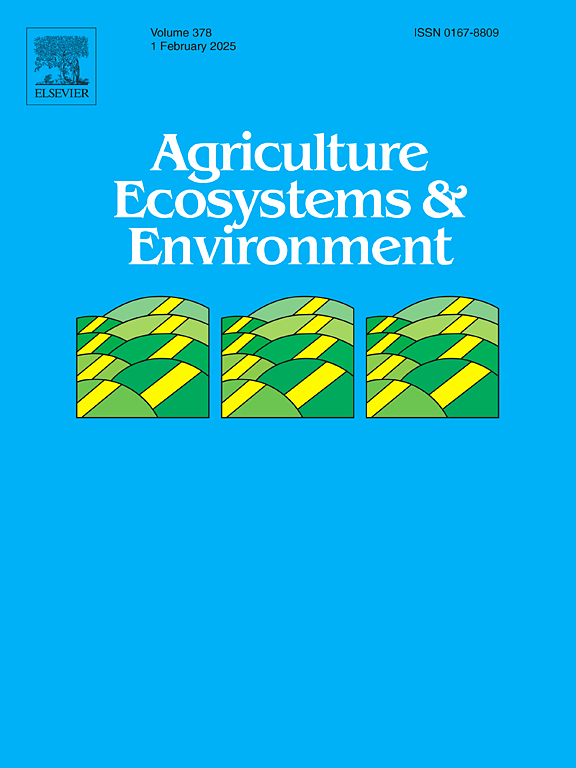Soil organic nitrogen sequestrated more in oilseed rape-rice rotation than in wheat-rice rotation under different fertilizations
IF 6
1区 农林科学
Q1 AGRICULTURE, MULTIDISCIPLINARY
引用次数: 0
Abstract
Oilseed rape-rice (OR) and wheat-rice (WR) rotations with different fertilizations are common practices in cropland management in the Yangtze River Basin. The sequestration of soil organic nitrogen (SON) plays a critical role in the preservation and sustained supply of nitrogen in cropland. However, few studies have focused on the impacts of crop rotation and fertilization on SON sequestration. Here, we observed the differences in SON sequestration between OR and WR rotations through a 6 years field experiment, each rotation pattern contained four fertilization treatments, including no fertilizer application (CK), nitrogen, phosphorus and potassium fertilizer application (NPK), replace 50 % nitrogen in NPK treatment with organic fertilizer (1/2NPKM), and NPK fertilizer and straw returning (NPKS). The results indicated that SON sequestration was 0.37–1.16 t ha−1 in OR rotation and 0.20–0.89 t ha−1 in WR rotation in the examined fertilization treatments. It was clear that SON sequestration in OR rotation was higher than that in WR rotation. The OR rotation also showed higher contents of soil labile organic nitrogen (LON) and particulate organic nitrogen (PON) than WR rotation in corresponding fertilization treatments. Active organic nitrogen (LON and PON) was the primary nitrogen pool that resulted in the difference between OR and WR rotation in SON sequestration. Compared with NPK treatment, 1/2NPKM and NPKS treatments increased SON sequestration respectively by 16 % and 23 % in OR rotation, and by 30 % and 29 % in WR rotation. Therefore, OR rotation sequestered more SON than WR rotation, straw returning and combined application of organic and inorganic fertilizers benefited SON sequestration in both rotations.
求助全文
约1分钟内获得全文
求助全文
来源期刊

Agriculture, Ecosystems & Environment
环境科学-环境科学
CiteScore
11.70
自引率
9.10%
发文量
392
审稿时长
26 days
期刊介绍:
Agriculture, Ecosystems and Environment publishes scientific articles dealing with the interface between agroecosystems and the natural environment, specifically how agriculture influences the environment and how changes in that environment impact agroecosystems. Preference is given to papers from experimental and observational research at the field, system or landscape level, from studies that enhance our understanding of processes using data-based biophysical modelling, and papers that bridge scientific disciplines and integrate knowledge. All papers should be placed in an international or wide comparative context.
 求助内容:
求助内容: 应助结果提醒方式:
应助结果提醒方式:


